Assignment 7: Putting It in Perspective
Previous Assignment: Less Is More
An excellent device for creating an interesting image is to use perspective. If you can look at a photo, and your eye follows it into the background, it's very pleasant to look at it for a long time.
One way to give a picture perspective is to use linear perspective. When you look at a scene, a road, for example, the lines converge toward the middle. Here are a few examples:
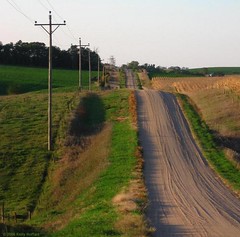



Another way to use perspective is to find a truly unique one, by lying down on the ground or whatever you need to do to show an ordinary scene in an extraordinary way. Of course, this isn't what is usually meant by expert photographers when they use the term "perspective," but I think it's conceptually related to these other kinds of perspective. Sometimes, all you need to do is tilt your camera, but often it's better to get above or below whatever you're looking at. Examples:
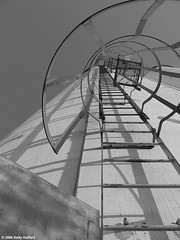





Notice that the ladder and drawer pictures also use linear perspective. Always remember that combining different photography techniques will create very compelling images.
And a final way to effectively use perspective is to think about the picture in terms of foreground, middleground, and background. This last trick is called spatial perspective. This is one of the areas where Ansel Adams really excelled, and honestly I'm not very good at it yet. It's probably the most difficult to use of all these tricks. But the idea is that you should find something interesting to put in the foreground, something interesting in the middleground, and something interesting in the background. This gives the picture a great feeling of depth in a more natural way. When you do this, you'll want to use a tight aperture (high f-number) to get detail at all levels, and using a wide angle lens would be ideal. An example:
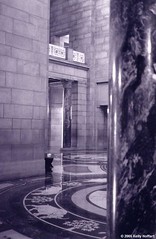
I'm kind of disappointed in myself that my best example of this is over a year and a half old. But notice how the column is the foreground, and it gives a frame of reference, then the wall on the left and the patterns on the floor are the middleground, and the rest is the background. It gives a feeling of depth without forcing it, as the converging lines of linear perspective do.
Spatial perspective is most effective when the foreground elements are easily recognizable (such as a person, car, door, or tree) so that they serve as a reference point. This gives the viewer a sense of the scale of everything in the picture. You can use it without easily recognized elements in the foreground, but this does make it more effective.
Two more examples (not as good as the first):
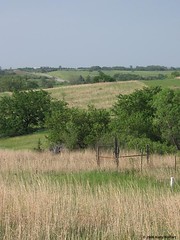
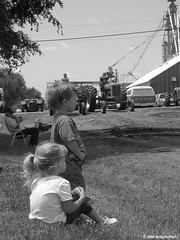
In the first of these, the foreground is the fence, the middleground is the first hill, and the rest is the background. It would be better if I had gotten in closer to the fence. In other words, this one has a weak foreground. In the second one, the kids provide the foreground, the man in the chair and the tractors are the middleground, and the grain elevator and building are the background. This one, however, has a weak background. On the plus side, both of them do use an easily-recognizable foreground element that gives the picture a sense of scale.
If you go back to my first example for linear perspective (the gravel road), you'll find that it also is a flawed example of this type of perspective, lacking a powerful foreground. Also, if you go back and look at the picture of Jack Daniel's paraphernalia, you'll see how spatial perspective can be used to fool the viewer instead of giving them a true sense of scale. It looks like a liter bottle, doesn't it? If you look closely, you'll see it's 375 mL.
So it looks like I have some work to do as well! Try to use all three kinds of perspective, then show me what you get!
Next Assignment: Leading Lines

0 Comments:
Post a Comment
<< Home